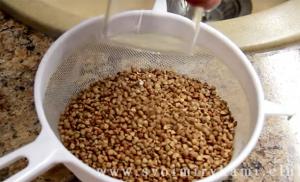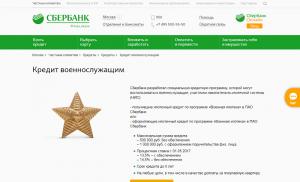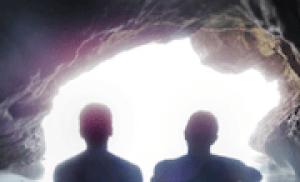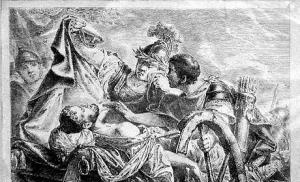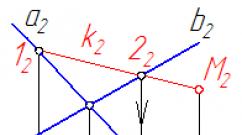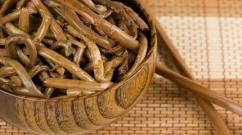Найти патенты маска для тесла. Система защиты АКБ от перезаряда
Большая часть патентов Tesla Motors, Inc. была заявлена компанией в период с 2010 по 2014 гг. Львиная доля данной интеллектуальной собственности посвящена двум основным темам: и оптимизации процесса её заряда.
Распределение патентов по тематике
 Распределение патентов по годам подачи заявки
Распределение патентов по годам подачи заявки
В данной статье мы рассмотрим три ключевых патента:
- (Методика быстрой зарядки);
- (Система защиты АКБ от перезаряда);
- (Аккумуляторная батарея с защитой ячеек).
Итак. Начнем с первого патента.
Методика быстрой зарядки
Данный патент содержит две ключевые идеи. Во-первых, под «быстрой» понимается зарядка не любой ценой, а с максимальным сохранением (продлением) жизненного цикла батареи. В этой связи разработчиком предлагается четрырехэтапная траектория заряда, её мы подробно рассмотрим чуть позже. Во-вторых, для сокращения времени полного заряда батареи второй и третий этапы модифицируются.
Вообще, данное изобретение больше относится исключительно к литий-ионным батареям, используемым в электротранспорте, но может быть применено и к другим типам источников питания.
Традиционно алгоритм заряда аккумуляторной батареи состоит из двух этапов.
На первом этапе заряд осуществляется в режиме поддержания постоянства тока (иногда постоянства мощности). Напряжение батареи при этом растет с начального до максимально допустимого для используемого типа батарей (4,2 В). На втором этапе заряд производится в режиме поддержания постоянства напряжения, равного требуемому. Ток при этом постепенно спадает. Процесс зарядки останавливается, когда ток становится меньше C/10.
Применение метода двухэтапного заряда для «быстрой» зарядки ведет к значительному снижению ресурса батареи, так как на первом этапе заряд постоянным током 1С длится недопустимо долго. Почему недопустимо мы объясним чуть позже.
Модернизируя процесс заряда до четырех (или более) этапного, мы значительно продлеваем жизненный цикл аккумуляторной батареи. Оптимальным является режим: constant current (CC) 2C — constant voltage (CV) 4В — СС 0,7С — СV 4,2 В. Наглядно данная диаграмма представлена на рисунке ниже.

Первая стадия идет в режиме постоянства тока, равного 2С, что больше традиционного 1С при двухэтапной зарядке. Напряжение при этом увеличивается с начального до 4…4,05 В. Это желаемая величина, реально она будет зависеть от внутреннего сопротивления конкретного элемента. Вторая стадия представляет собой режим постоянного напряжения, равного достигнутому на первом этапе. При этом ток уменьшается с 2С до 0,7С. Третья стадия вновь представляет собой работу в режиме поддержания постоянства тока. Напряжение при этом увеличивается с 4,05 до 4,2 В. Наконец, на четвертой стадии поддерживается постоянным напряжение до тех пор, пока ток не упадет до минимального (заданного) значения.
Наличие промежуточного этапа улучшает скорость зарядки без пагубного влияния на жизненный цикл батарей. Объясняется это физико-химическими процессами, протекающими в АКБ. Рассмотрим данный вопрос подробнее. Для этого введем термин Rbad (это именно то, что Вы подумали, дословно «bad» переводится, как «плохой»), который представляет собой сопротивление ячейки в функции различных физических параметров, которые могут оказывать негативный эффект на жизненный цикл АКБ.

Еще раз подчеркнем, что Rbad — это вымышленная, воображаемая величина. Например, Rbad частично представляет поляризацию отрицательного электрода Ranode . С ростом Ranode вероятность металлизации лития на аноде увеличивается, что приводит к потере проводимости батареи. Rbad высок при низком уровне заряда, что обусловлено высоким внутренним сопротивлением ячейки. Кроме того, Rbad растет по мере приближения уровня заряда батареи к полному. В общем же, с ростом сопротивления Rbad (с «возрастом» АКБ, по истечении большого количества циклов заряд-разряд, при низкой температуре) заданное напряжение падает.

Наличие Rbad в модели батареи это путь математического описания, который используется в контроллере для предотвращения режимов, когда недопустимо высокие токи могут быть причиной необратимого падения емкости ячейки. Учет Rbad позволяет увеличить срок службы АКБ.
На рисунке выше показана оптимальная диаграмма процесса заряда с учетом Rbad. Изначально в этом случае идет стадия заряда в режиме поддержания постоянного тока, причем с максимальным током (5С, а в некоторых случаях и выше). Таким образом, данное обстоятельство (высокое Rbad на начальном этапе заряда) играет нам на руку, так как дает возможным производить заряд большим током. Напряжение ячейки при этом составляет V c=V Зад-iBat *Rbad, где iBat — ток заряда батареи. Rbad определяет наклон кривой тока и напряжения (при уменьшении тока, уменьшается и Ubad . Rbad растет с ростом уровня заряда).
С учетом вышесказанного, модифицированный вид оптимальной диаграммы заряда будет выглядеть следующим образом.

В данном случае (по сравнению с обычной четырехэтапной зарядкой, представленной на fig .1) второй и третий этапы получаются объединенными. При этом промежуточный этап позволяет существенно сократить время полного заряда. Другими словами, t 4 будет всегда значительно меньше t 3. Наклон участка 610 зависит от внутреннего сопротивления ячейки, температуры и «возраста» батареи, иначе говоря от Rbad.
Система защиты АКБ от перезаряда
Данный патент представляет собой не столько конкретное устройство или схему, сколько идею надежной защиты батареи от перезаряда. Перезаряд — это одно из наиболее разрушительных состояний, в котором может находиться батарея. При этом выделяется большое количество тепла, достаточного для воспламенения аккумулятора. По этой причине большинство производимых ячеек наделены собственными защитными механизмами. Но данные механизмы не всегда эффективны, когда ячейка работает в в составе группы. Тогда применяют дополнительные системы, которые можно разделить на две группы: относящиеся непосредственно к аккумуляторной батарее и относящиеся к системе заряда.

При нормальной работе АКБ система «спит». В случае перезаряда, если другие системы не отработали данное событие, система создает в цепи короткое замыкание, которое вызывает срабатывание предохранителя (Fuse ), тем самым разрывая путь от зарядного устройства к аккумуляторной батарее, предотвращая её перегрев.
Данная система более надежна, так как не использует микропроцессор или какой-либо другой контроллер, не требует вторичного источника питания и не находится непосредственно в высоковольтной цепи. В общем случае система может быть расположена между модулями АКБ. В силу низкой стоимости и малых габаритов это не является проблемой. Система может сработать только однажды, далее потребуется замена предохранителя.
Как вариант, практическая реализация данного устройства может быть выполнена на базе полупроводникового ключа, например, IGBT -транзистора.

В случае повышения напряжения до уровня порогового (заданного), ключ замыкается и ток начинает протекать через устройство, тем самым блок АКБ закорачивается и ток через него не проходит. Это, в свою очередь, приводит к срабатыванию предохранителя и разрыву цепи, соединяющей модули (по сути всей силовой цепи). На рисунке выше приведен лишь один из вариантов практического исполнения.
Аккумуляторная батарея с защитой ячеек
На «сладенькое» мы оставили наиболее интересное изобретение компании Tesla Motors . Оно связано с устройством аккумуляторной батареи как таковой, точнее с принципом соединения ячеек в группы (подробнее об устройстве батареи «в железе» была ).
Проблема устойчивого дугового разряда хорошо известна в инженерной практике. Она успешно решается в выключателях и прочих устройствах, от которых требуется выполнение функции размыкания цепи. Сложнее бороться с данной проблемой в случае непреднамеренного разрыва цепи. Для аккумуляторной батареи электромобиля это может быть авария или другое повреждение АКБ.
В аккумуляторных батареях традиционного исполнения предохранитель включают в цепь либо на входе всей группы, либо последовательно с каждой из нескольких параллельно соединенных ячеек.


Типовое (традиционное) расположение предохранителей в АКБ
Однако, в аккумуляторной батарее, состоящей из большого числа плотно упакованных ячеек в случае короткого замыкания может возникнуть перегрев (за счет плотной упаковки, вплоть до 900 градусов), вследствие чего может возникнуть каскадный лавинообразный эффект. Высокая температура внутри упаковки будет только усугублять ситуацию. Батарея в таком случае получит большие повреждения.
Иногда в качестве предохранителей используют сами соединения батарей, выполняя их из плавких материалов. В случае возникновения короткого замыкания в батарее, состоящей из нескольких параллельно соединенных ячеек такие соединения перегорают одно за другим произвольно (малозаметная разница времени перегорания обусловлена отличающимися на небольшую величину внутренними сопротивлениями). Чтобы в этом случае избежать возникновения дуги, необходимо разработать сложную, дорогую и довольно громоздкую систему.
Суть данного изобретения сводится к тому, чтобы выполнить соединение ячеек таким образом, чтобы одна из них гарантированно перегорала последней и для нее обеспечить эффективное и недорогое средство гашения дуги.
Первая задача решается выполнением одного из соединений с меньшим электрическим сопротивлением, чем остальные. Именно оно гарантированно перегорит последним.

Выполнение предохранителей для управляемого появления электрической дуги
Идея демонстрируется на рисунке. Восемь батарей параллельно соединяются посредством плавких соединителей (физически они похожи на проволоку), причем первые семь соединений 309 имеют одно сопротивление, а соединения 401 и 403 имеют меньшее сопротивление. Причем r401 Остается открытым вопрос, каким способом сделать сопротивление одного из соединений меньше остальных. Разные материалы
Разная длина
Данная задача решается путем: Однако, иногда применяют и другие способы. Например, параллельное включение конденсатора большой емкости (1601, fig.16). Данный конденсатор выбирают на номинальное напряжение ячейки и при нормальных условиях он никак не влияет на работу батареи. В случае возникновения КЗ, при перегорании плавкого соединения 1005, вся энергия уходит на заряд конденсатора. Еще одним направлением решения данной проблемы является увеличение длины дуги. Здесь наиболее эффективным оказалось применение постоянных магнитов (1802, fig.18). При гарантированном перегорании последнего по очереди плавкого соединения 703 начинает образовываться дуга, но за счет воздействия магнита, она постепенно выгибается в его сторону и в итоге разрывается. Комплекс описанных технических решений позволяет создать модуль аккумуляторных ячеек, отличающийся улучшенной производительностью, высокой надежностью и безопасностью, имеющим при этом достаточно низкую стоимость, простоту и малые габариты системы защиты ячеек. Батарея выполняется таким образом, что плавкие соединения являются единственными соединениями батарей и именно они перегорают в случае короткого замыкания. Риск устойчивого дугового разряда в данном случае сведен к минимуму, как и риск чрезмерного перегрева батареи. Рассмотренные патенты относятся к периоду 2011-2112 гг. Если данный пост наберет в сумме по всем соцсетям более 50 репостов (счетчик расположен в окончании статьи), мы продолжим эту тему и рассмотрим в следующей публикации еще три наиболее интересных технических решения, относящиеся к 2012-2013 гг.
Другие патенты Tesla Motors, Inc
.: , Yesterday, there was a wall of Tesla patents in the lobby of our Palo Alto headquarters. That is no longer the case. They have been removed, in the spirit of the open source movement, for the advancement of electric vehicle technology. Tesla Motors was created to accelerate the advent of sustainable transport. If we clear a path to the creation of compelling electric vehicles, but then lay intellectual property landmines behind us to inhibit others, we are acting in a manner contrary to that goal. Tesla will not initiate patent lawsuits against anyone who, in good faith, wants to use our technology. When I started out with my first company, Zip2, I thought patents were a good thing and worked hard to obtain them. And maybe they were good long ago, but too often these days they serve merely to stifle progress, entrench the positions of giant corporations and enrich those in the legal profession, rather than the actual inventors. After Zip2, when I realized that receiving a patent really just meant that you bought a lottery ticket to a lawsuit, I avoided them whenever possible. At Tesla, however, we felt compelled to create patents out of concern that the big car companies would copy our technology and then use their massive manufacturing, sales and marketing power to overwhelm Tesla. We couldn’t have been more wrong. The unfortunate reality is the opposite: electric car programs (or programs for any vehicle that doesn’t burn hydrocarbons) at the major manufacturers are small to non-existent, constituting an average of far less than 1% of their total vehicle sales. At best, the large automakers are producing electric cars with limited range in limited volume. Some produce no zero emission cars at all. Given that annual new vehicle production is approaching 100 million per year and the global fleet is approximately 2 billion cars, it is impossible for Tesla to build electric cars fast enough to address the carbon crisis. By the same token, it means the market is enormous. Our true competition is not the small trickle of non-Tesla electric cars being produced, but rather the enormous flood of gasoline cars pouring out of the world’s factories every day. We believe that Tesla, other companies making electric cars, and the world would all benefit from a common, rapidly-evolving technology platform. Technology leadership is not defined by patents, which history has repeatedly shown to be small protection indeed against a determined competitor, but rather by the ability of a company to attract and motivate the world’s most talented engineers. We believe that applying the open source philosophy to our patents will strengthen rather than diminish Tesla’s position in this regard. Ещё в июне 2014 года основатель Tesla Motors, Илон Маск, на собрании акционеров заявил, что компания передаст все корпоративные патенты Tesla Motors в общественное пользование. Буквально на днях в ходе Детройтского автосалона Маск снял всякие сомнения, сказав, что патенты доступны абсолютно для всех без всяких ограничений.
"Ещё вчера в фойе штаб-квартиры в Пало-Альто стену занимали патенты Tesla. Больше их нет. Их сняли, в духе движения open source, для продвижения технологий электрических автомобилей"
, - писал в 2014 Илон Маск в корпоративном блоге . Но весь вопрос заключался в небольшой фразе в текстах политики открытых патентов. Суть в том, что интеллектуальной собственностью Tesla Motors можно воспользоваться в "добросовестных" целях. Пошла молва: а что, если Tesla Motors будет выбирать, кому можно использовать патенты, а кому нет. Во время Детройтского автосалона Илон Маск дал интервью прессе. Один из журналистов спросил, как много автопроизводителей воспользовались предложением Tesla. Элон Маск ответил просто, что не может этого знать: "На самом деле, мы не требуем проведения каких-либо формальных переговоров. Так что они могут просто брать и использовать их."
На вопрос репортёра о наличии какого-либо процесса лицензирования, Маск также не задумываясь ответил: "Нет. Вы просто используете их. Я думаю, так лучше, потому что нам не нужно вступать в переговоры и всё в этом роде. Так что мы не знаем. Наверное, вы увидите в будущих моделях автомобилей, если они решат их использовать."
Открывая патенты, Илон Маск пояснил смену политики. Раньше компания стремилась патентовать уникальные технологии, чтобы защититься от конкуренции со стороны крупных автоконцернов. Предполагалось, что они тоже начнут массово производить электромобили. По мнению основателя Tesla Motors, это была большая ошибка. Как показала реальность, концерны вообще не слишком заинтересованы в продвижении этой технологии. До сих пор машины на углеводородном топливе составляют 99% или больше продаж любого крупного концерна. Дело в том, что "большие компании плохо восприимчивы к настоящим, революционным инновациям"
. Они слишком сконцентрированы на привычном бизнесе. Илон Маск понял, что бизнесу Tesla Motors угрожает не столько конкуренция со стороны других электромобилей, сколько отсутствие этой конкуренции, то есть слишком большое количество бензиновых автомобилей, сходящих с конвейеров. Таким образом открытие патентов только расширяет рынок автомобилей и, в конечном счёте, выгодно самой компании. Tesla Motors Patents Tesla Motors, Inc. designs, develops, manufactures and sells electric vehicles, and operates a network of charging stations for Tesla electric vehicles. Tesla also sells electric vehicle powertrain components to other vehicle manufacturers, as well as battery systems for homes, commercial sites and utilities. Publication number:
20190070924 Abstract:
A vehicle thermal management system includes a vehicle heat pump system, a battery system coolant loop, a drive train coolant loop, and control electronics. The vehicle heat pump system includes a compressor, a cabin condenser, a cabin evaporator, a cabin blower, and a chiller. The battery system coolant loop is in thermal communication with a battery system and with the chiller and selectively in thermal communication with the drive train coolant loop. The control electronics control the components of the vehicle thermal management system to heat the cabin, cool the cabin, heat the battery system, cool the battery system, and cool the drive train. The control electronics may control the compressor to operate in an efficient mode or a lossy mode in which the compressor generates heat. The control electronics may also control the components of the vehicle thermal management system to precondition the battery. Type:
Application Filed:
September 7, 2018 Publication date:
March 7, 2019 Applicant:
Tesla, Inc. Inventors:
Nicholas Mancini, Joseph Stratford Maxwell Mardall, Jan Kopitz, Curt Raymond O"Donnell, Daniel F. Hanks, Huize Li Publication number:
20190068217 Abstract:
Various embodiments of the invention provide systems, devices, and methods for decompressing encoded electronic data to increase decompression throughput using any number of decoding engines. In certain embodiments, this is accomplished by identifying and processing a next record in a pipeline operation before having to complete the decompression of a current record. Various embodiments take advantage of the knowledge of the method of how the records have been encoded, e.g., in a single long record, to greatly reduce delay time, compared with existing designs, when decompressing encoded electronic data. Type:
Application Filed:
August 28, 2017 Publication date:
February 28, 2019 Applicant:
Tesla, Inc. Inventors:
Peter Joseph BANNON, Kevin Altair HURD Patent number:
10211712 Abstract:
A method of making an AC induction motor includes: providing a rotor and a stator for the AC induction motor; determining, for different geometries of an end ring of the rotor, a location of a first centroid of current density in the end ring; determining, for end turns of the stator, a location of a second centroid of current density in the end turns; selecting a geometry for at least the endring of the rotor so that an axial distance between the first centroid of current density and the second centroid of current density is minimized; and assembling the AC induction motor, wherein the end turns and the end ring have the selected geometries. Type:
Grant Filed:
November 20, 2015 Date of Patent:
February 19, 2019 Assignee:
TESLA, INC. Inventors:
Konstantinos Laskaris, Andrew D. Baglino Patent number:
10199804 Abstract:
A busbar locating component includes: one or more first attachments configured for attaching a busbar layer to the busbar locating component; one or more bays each configured to contain and position an assembly of transistors essentially perpendicular to the busbar layer for connection; and a plurality of slots, each slot configured to contain and position a busbar relative to the busbar layer for connection. Type:
Grant Filed:
December 1, 2014 Date of Patent:
February 5, 2019 Assignee:
Tesla, Inc. Inventors:
Robert James Ramm, Dino Sasaridis, Colin Campbell, Wenjun Liu Publication number:
20190030867 Abstract:
Treatments are provided to strengthen adhesion of an optical filter layer in a photovoltaic (PV) module to an encapsulant layer, or generally, between inorganic materials and organic polymers. The embodiments disclosed herein can provide five or more times the adhesive forces of untreated encapsulant-filter interfaces. As a result, the system can enhance long-term reliability of PV modules by reducing interface surface charges and dangling bonds and reducing gaps and cracks, thereby preventing moisture, impurities, and particles from entering the interface. The treated optical filter layer can result in a surface modification. In some embodiments, treating the optical filter layer includes applying a chemical treatment such as an acid or alkaline wash, and/or ultrasonic cleaning. Type:
Application Filed:
July 25, 2017 Publication date:
January 31, 2019 Applicant:
TESLA, INC. Inventors:
Zhi-Wen Sun, Ollivier J. Lefevre, Jiunn Benjamin Heng Publication number:
20190036171 Abstract:
Improved battery systems have been developed for lithium-ion based batteries. The improved battery systems consist of two-additive mixtures in an electrolyte solvent that is a carbonate solvent, an organic solvent, a non-aqueous solvent, and/or methyl acetate. The positive electrode of the improved battery systems may be formed from lithium nickel manganese cobalt compounds, and the negative electrode of the improved battery system may be formed from natural or artificial graphite. Type:
Application Filed:
July 31, 2017 Publication date:
January 31, 2019 Applicant:
Tesla Motors Canada ULC Inventors:
Jeffery R. Dahn, Jing Li, Stephen Laurence Glazier Patent number:
10193467 Abstract:
We describe a power conditioning unit with maximum power point tracking (MPPT) for a dc power source, in particular a photovoltaic panel. A power injection control block has a sense input coupled to an energy storage capacitor on a dc link and controls a dc-to-ac converter to control the injected mains power. The power injection control block tracks the maximum power point by measuring a signal on the dc link which depends on the power drawn from the dc power source, and thus there is no need to measure the dc voltage and current from the dc source. In embodiments the signal is a ripple voltage level and the power injection control block controls an amplitude of an ac current output such that an amount of power transferred to the grid mains is dependent on an amplitude of a sinusoidal voltage component on the energy storage capacitor. Type:
Grant Filed:
June 16, 2017 Date of Patent:
January 29, 2019 Assignee:
Tesla, Inc. Inventors:
Lesley Chisenga, Gehan Anil Joseph Amaratunga, Cuauhtemoc Rodriguez Publication number:
20190028055 Abstract:
One embodiment provides a solar roof tile module. The module includes a plurality of solar roof tiles positioned side by side and one or more tile spacers. The tiles are electrically and mechanically coupled to each other. A tile spacer is positioned between two adjacent solar roof tiles, thereby preventing water leakage. A solar roof tile can include a front cover, a back cover, and a plurality of photovoltaic strips positioned between the front and back covers. Each photovoltaic strip includes a first edge busbar located on an edge of a first surface and a second edge busbar located on an opposite edge of a second surface, and the photovoltaic strips are arranged in such a way that the first edge busbar of a photovoltaic strip overlaps with a second edge busbar of an adjacent photovoltaic strip, thereby forming a serial connection among the photovoltaic strips. Type:
Application Filed:
July 21, 2017 Publication date:
January 24, 2019 Applicant:
TESLA, INC. Inventors:
Bobby Yang, Peter P. Nguyen, Seth M. Winger, Piotr Zajac, Kaleb A. Klauber, Jennifer L. Wang, Jiunn Benjamin Heng Publication number:
20190026078 Abstract:
Various embodiments of the disclosure relate to an accelerated mathematical engine. In certain embodiments, the accelerated mathematical engine is applied to image processing such that convolution of an image is accelerated by using a two-dimensional matrix processor comprising sub-circuits that include an ALU, output register and shadow register. This architecture supports a clocked, two-dimensional architecture in which image data and weights are multiplied in a synchronized manner to allow a large number of mathematical operations to be performed in parallel. Type:
Application Filed:
September 20, 2017 Publication date:
January 24, 2019 Applicant:
Tesla, Inc. Inventors:
Peter Joseph BANNON, Kevin Altair HURD, Emil TALPES Patent number:
10181541 Abstract:
A solar photovoltaic module laminate for electric power generation is provided. A plurality of solar cells are embedded within module laminate and arranged to form at least one string of electrically interconnected solar cells within said module laminate. A plurality of power optimizers are embedded within the module laminate and electrically interconnected to and powered with the plurality of solar cells. Each of the distributed power optimizers capable of operating in either pass-through mode without local maximum-power-point tracking (MPPT) or switching mode with local maximum-power-point tracking (MPPT) and having at least one associated bypass switch for distributed shade management. Type:
Grant Filed:
April 14, 2014 Date of Patent:
January 15, 2019 Assignee:
Tesla, Inc. Inventor:
Mehrdad M. Moslehi Patent number:
10181535 Abstract:
Fabrication methods and structures relating to backplanes for back contact solar cells that provide for solar cell substrate reinforcement and electrical interconnects are described. The method comprises depositing an interdigitated pattern of base electrodes and emitter electrodes on a backside surface of a semiconductor substrate, forming electrically conductive emitter plugs and base plugs on the interdigitated pattern, and attaching a backplane having a second interdigitated pattern of base electrodes and emitter electrodes at the conductive emitter and base plugs to form electrical interconnects. Type:
Grant Filed:
February 2, 2015 Date of Patent:
January 15, 2019 Assignee:
Tesla, Inc. Inventors:
Mehrdad M. Moslehi, David Xuan-Qi Wang, Karl-Josef Kramer, Sean M. Seutter, Sam Tone Tor, Anthony Calcaterra Patent number:
10181536 Abstract:
One embodiment of the present invention can provide a system for fabrication of a photovoltaic structure. The system can include a physical vapor deposition tool configured to sequentially deposit a transparent conductive oxide layer and a metallic layer on an emitter layer formed in a first surface of a Si substrate, without requiring the Si substrate to be removed from the physical vapor deposition tool after depositing the transparent conductive oxide layer. The system can further include an electroplating tool configured to plate a metallic grid on the metallic layer and a thermal annealing tool configured to anneal the transparent conductive oxide layer. Type:
Grant Filed:
August 8, 2017 Date of Patent:
January 15, 2019 Assignee:
Tesla, Inc. Inventor:
Wei Wang Patent number:
10180727 Abstract:
A method of launching a software program or application is provided for use with a graphical user interface (GUI) display. One portion of the GUI display includes a taskbar while a second portion is divided into a plurality of windows. To launch one of the programs/applications represented by the icons within the taskbar, the user first selects the icon representing the icon to be launched. Once an icon is selected, a visual cue is displayed, where the visual cue includes a plurality of mini-windows representing the plurality of display windows. When the user drags the selected icon into one of the mini-windows and then releases the icon, the selected program/application is launched in the window that corresponds to the selected mini-window. Type:
Grant Filed:
February 12, 2013 Date of Patent:
January 15, 2019 Assignee:
TESLA, INC. Inventors:
Brennan Boblett, Nalinichandra Penke, Roy Goldman, Michael Fairman Patent number:
10173739 Abstract:
A method for constructing an integrated end structure for a vehicle includes placing a center module for an integrated end structure for a vehicle in a fixture separate from the vehicle, attaching a side bracket to the center module in the fixture to form an assembly, the side bracket configured for holding a light unit of the vehicle, mounting the assembly onto at least a bracket in the vehicle that provides adjustability of the assembly in at least a z-direction, and, after mounting the assembly, mounting a storage compartment module onto the center module and the side bracket. Type:
Grant Filed:
December 16, 2016 Date of Patent:
January 8, 2019 Assignee:
Tesla, Inc. Inventors:
James Bellis, P Thomas Vikstrom Patent number:
10178805 Abstract:
A heatsink with an internal cavity for liquid cooling includes: a first part having a first group of fins extending into the internal cavity; a second part attached to the first part so that the internal cavity is formed, the second part having a second group of fins that extend into the internal cavity and that are configured to fit among the first group of fins; an inlet into the internal cavity on at least one of the first and second parts; and an outlet from the internal cavity on at least one of the first and second parts. Type:
Grant Filed:
May 23, 2014 Date of Patent:
January 8, 2019 Assignee:
Tesla, Inc. Inventors:
Robert James Ramm, Wenjun Liu, Colin Campbell Publication number:
20190003570 Abstract:
A gear box and method of providing oil through the same is provided. The gear box includes a windage tray that includes a tray having a bleed hole therein, and another tray having another second bleed hole therein. Oil is provided through the bleed holes to respective gears situated in the trays. The windage tray may also include a magnet positioned within a magnet slot of the windage tray, for removing debris from the oil. A tube may also be attached to the windage tray, which tube can include a bleed hole therein, for spraying the oil out of the tube and towards a differential, for example. The windage tray and tube can be made from molded plastic, and can be made using the same mold. The gear box housing may further define a drain in an inner side wall to provide oil to a differential bearing, for example. Type:
Application Filed:
April 4, 2018 Publication date:
January 3, 2019 Applicant:
Tesla, Inc. Inventors:
Scott Michael Graves, Diego Alberto Silva Rodriguez Publication number:
20190006923 Abstract:
An electric drive unit and method of assembling the same is disclosed. The electric drive unit includes a rotor having a rotor shaft, and gear shaft, where the rotor shaft is inserted into the gear shaft. The gear shaft is supported by two bearings, while the rotor shaft supported directly at one end by a bearing and at the other by the gear shaft. A wave spring is also disclosed that provides an axial loading to the rotor shaft. Also disclosed is a balancing ring secured to an end of the rotor via a locknut. The balancing ring can be machined in order to balance the rotor. The rotor shaft can be connected to the gear shaft via a spline connection. The rotor shaft can bear against the gear shaft via a pilot journal and pilot bore defined on the rotor shaft and gear shaft respectively. Type:
Application Filed:
April 4, 2018 Publication date:
January 3, 2019 Applicant:
Tesla, Inc. Inventors:
Benjamin Dellal, Scott Michael Graves, Luke Ottaway Publication number:
20190006914 Abstract:
Systems and methods for cooling power transmission systems are include providing oil through an aperture defined in a housing to a stator cooling ring, through the stator cooling ring and into stator cooling channels, through the stator cooling channels and into spaces defined between the housing and jet rings, and through holes in the jet rings and onto the end-windings. The stator cooling ring, stator cooling channels and jet rings can encircle the stator and end-windings and, via the holes in the jet rings, spray pressurized jets of oil from various angles onto the end-windings, and in particular middle regions thereof. Seals may be used between the jet rings and housing, and between the jet rings and stator ends. The seals may be compressed so as to form an interference fit between the jet rings and housing or stator ends as the case may be. Type:
Application Filed:
April 4, 2018 Publication date:
January 3, 2019 Applicant:
Tesla, Inc. Inventors:
Scott Michael Graves, Eric Bellemare, Alexander Hain Publication number:
20190006723 Abstract:
Embodiments of the present invention include a battery management system that provide a plurality of channels that allow communication between host and clients. This communication may operate in bi-directional modes such that commands from the host and responses from the clients are transmitted clockwise or counter-clockwise around a daisy-chain loop. This architecture provides both a high level of redundancy across multiple channels as well as transmission directions around the loop. The use of multiple channels provides a separation in signal paths akin to the provision of completely separate physical wires, preventing malfunction of spurious operation of devices using one channel from interfering with the normal operation of devices using the other channel. In addition, the signaling architecture allows a host to dynamically transmit commands and receive responses between specific client(s) and host or broadcast communication across all clients. Type:
Application Filed:
June 28, 2018 Publication date:
January 3, 2019 Applicant:
Tesla, Inc. Inventors:
NATHANIEL MARTIN, ANIA MITROS, CHARLES MELLONE, IAN DIMEN Publication number:
20190003477 Abstract:
An electric pump system and method of operating the same involves pumping a fluid through a fluid passageway defined in a mechanical pump from a pump inlet to a hollow shaft of a motor, through the hollow shaft to an internal motor cavity defined by a housing of the motor, and through another fluid passageway defined in the motor housing and mechanical pump that leads to a pump outlet. The system and method further involve pumping the fluid through another fluid passageway defined in the mechanical pump from yet another pump inlet to the pump outlet. The temperature of fluid exiting the hollow shaft can be assessed and used by an electronic control unit (ECU) of the electric pump system to control the same. The electric pump system can be part of a cooling and lubrication system for an electric vehicle transmission, gearbox, differential or transfer case, for example. Type:
Application Filed:
April 4, 2018 Publication date:
January 3, 2019 Applicant:
Tesla, Inc. Inventors:
Scott Michael Graves, Eric Bellemare, Yufei Zhu, Benjamin Dellal, Diego Alberto Silva Rodriguez Publication number:
20190003526 Abstract:
A drive unit is disclosed that includes case portions, a gasket interposed between the case portions, shafts, bearings having respective bearing races, and a bearing shim plate. One shaft includes an input oil tube which provides a fluid pathway between the bearing shim plate and a rotor of the drive unit. Interposed between bearings, and the bearing shim plate, are shims. An approach for sizing shims for use with a drive unit is also disclosed, the approach including determining the distance from a mating flange of a case portion, to different bearing races, selecting shims based on the determined distances, and attaching the bearing shim plate to the case portion with shims interposed therebetween. Type:
Application Filed:
April 4, 2018 Publication date:
January 3, 2019 Applicant:
Tesla, Inc. Inventors:
Scott Michael Graves, Luke Ottaway, Ian Felder Publication number:
20190003572 Abstract:
Systems and method for cooling and lubricating power transmission systems include providing oil to an oil tube and then to a rotor shaft via the oil tube. Oil may also be provided through at least one channel defined in an end of the oil tube inserted into an annular region of the rotor shaft, through at least one channel defined in an end of the gear shaft and between the end and a shoulder of the rotor shaft and through at least one channel defined in side surface of the rotor shaft in a region of rotor shaft inserted into the gear shaft. Such systems and method can also include providing oil a fluid passageway in a bearing shim plate via an inlet tube. Oil may also be provided through a radial gap adjacent a bearing shim plate outlet and chamber defined in the bearing shim plate. Type:
Application Filed:
April 4, 2018 Publication date:
January 3, 2019 Applicant:
Tesla, Inc. Inventors:
Benjamin Dellal, Luke Ottaway, Scott Michael Graves, Eric Bellemare Patent number:
10167398 Abstract:
This invention pertains to a composition that can be used to heal cracks in plastics and other substrates. In the present invention, a composition comprising nanotubes, healing agent(s), and end caps for the nanotubes may be used to heal crack(s) as they begin to occur. With the composition, the healing agent(s) are contained within the nanotubes, and a reaction releases the healing agent(s) after the end caps can be removed from the nanotubes. This invention also includes a method of preparing a composition for healing cracks in plastics and other substrates. For this method, the healing agent(s) are filled inside of the nanotubes, and then end caps are bound onto the ends of the nanotubes. After a reaction occurs to remove the end caps and release the healing agent(s), the cracks within the substrate may then be healed. Type:
Grant Filed:
March 28, 2018 Date of Patent:
January 1, 2019 Assignee:
Tesla NanoCoatings, Inc. Inventor:
Jorma Antero Virtanen Patent number:
10167996 Abstract:
An adjustable bracket includes a body of quadrilateral shape that defines an attachment plane for a device, which includes a first adjustment mechanism located adjacent a first corner of the quadrilateral shape, a second adjustment mechanism located adjacent a second corner of the quadrilateral shape, and a pivot. The first adjustment mechanism includes a first passage transverse to the attachment plane, a second passage parallel to the attachment plane and leading to the first passage, and a first moveable member extending in the first passage. The second adjustment mechanism includes a third passage transverse to the attachment plane and a fourth passage parallel to the attachment plane, and a second moveable member extending into the third passage. The pivot locates adjacent a fourth corner of the quadrilateral shape such that the first and second adjustment mechanisms are configured for adjusting the adjustable bracket relative to the pivot. Type:
Grant Filed:
February 17, 2017 Date of Patent:
January 1, 2019 Assignee:
Tesla, Inc. Inventors:
Dylan Thomas Cox, Dan Calder, Javor Gnjidic Patent number:
10166590 Abstract:
A method of forming a part includes: inserting a blank into a die, the die comprising a mold mounted above a sealing counterpart; clamping the blank between the mold and the sealing counterpart; applying first pressure on the blank from the sealing counterpart so the blank is pressed upward to form a shaped part corresponding to the mold; applying a vacuum to the shaped part to hold it against the mold also after separating the mold and the sealing counterpart, the vacuum applied through at least one opening in the mold located in a corner of the mold that the blank does not reach when the first pressure is applied; and discontinuing the vacuum to allow the shaped part to be released from the mold. Type:
Grant Filed:
September 25, 2015 Date of Patent:
January 1, 2019 Assignee:
Tesla, Inc. Inventors:
Rajesh Prasannavenkatesan, Matthew Parker, Yvon Laplante, Nicolas Bombardier, Ben Rush, Shi Li Patent number:
10164127 Abstract:
One embodiment of the present invention provides a solar module. The solar module includes a front-side cover, a back-side cover, and a plurality of solar cells situated between the front- and back-side covers. A respective solar cell includes a multi-layer semiconductor structure, a front-side electrode situated above the multi-layer semiconductor structure, and a back-side electrode situated below the multi-layer semiconductor structure. Each of the front-side and the back-side electrodes comprises a metal grid. A respective metal grid comprises a plurality of finger lines and a single busbar coupled to the finger lines. The single busbar is configured to collect current from the finger lines. Type:
Grant Filed:
November 8, 2016 Date of Patent:
December 25, 2018 Assignee:
Tesla, Inc. Inventors:
Jiunn Benjamin Heng, Jianming Fu, Zheng Xu, Bobby Yang Patent number:
10153116 Abstract:
An electromagnetic switch includes: at least two stationary electric contacts; and a moveable contact, wherein the electromagnetic switch is configured for reciprocal motion of the moveable contact into and out of contact with the stationary electric contacts, wherein the moveable contact is configured so that at least three contact points occur in the reciprocal motion, and so that a triangle defined by the at least three contact points encloses a center of force of the movement. Type:
Grant Filed:
December 2, 2013 Date of Patent:
December 11, 2018 Assignee:
TESLA, INC. Inventors:
Bennett Sprague, Ian C. Dimen, Scott I. Kohn, Andrew Titus, Jeffrey G. Reichbach, Gregory Michael Goetchius, Garland Dughi Publication number:
20180342640 Abstract:
A colored photovoltaic (PV) module or roof tile including a layer of highly stable nanoparticles provides uniform, angle-independent viewer color. The nanoparticles can comprise a metal oxide such as zinc oxide, titanium dioxide, or iron oxide. The nanoparticles can have composition and/or size tuned to absorb wavelengths of light reflected from PV cells, effectively concealing their appearance, and tuned to scatter wavelengths in a desired color range. The disclosed embodiments can provide better color uniformity and better efficiency, and be more cost-effective, than existing approaches for manufacturing colored PV modules. During the manufacturing process, a coating system, which may include one or more nozzles, can spray an inside surface of a glass cover with nanoparticles, which can be suspended in a solvent (such as water or isopropyl alcohol). The nanoparticle layer can then be encapsulated directly inside an encapsulant layer. Type:
Application Filed:
November 22, 2017 Publication date:
November 29, 2018 Applicant:
TESLA, INC. Inventors:
Yangsen Kang, Nathan D. Rock, Jiunn Benjamin Heng Patent number:
10141745 Abstract:
We describe a photovoltaic (PV) panel system comprising a PV panel with multiple sub-strings of connected solar cells in combination with a power conditioning unit (microinverter). The power conditioning unit comprises a set of input power converters, one connected to each sub-string, and a common output power conversion stage, to provide power to an ac mains power supply output. Integration of the micro-inverter into the solar PV module in this way provides many advantages, including greater efficiency and reliability. Additionally, embodiments of the invention avoid the need for bypass diodes, a component with a high failure rate in PV panels, providing lower power loss and higher reliability. Type:
Grant Filed:
December 12, 2016 Date of Patent:
November 27, 2018 Assignee:
Tesla, Inc. Inventors:
Paul Garrity, Asim Mumtaz Publication number:
20180337629 Abstract:
Micro-structures and directional and multi-directional coatings for uniformly colored and directionally colored photovoltaic modules and roof tiles are described. The photovoltaic roof tiles include a glass cover with texture of a micro scale on a first side, and one or more layers of a transparent material adjoining the first side of the textured glass configured to reflect light of a color. A glass cover can have texture on a first side and a layer of sphere shaped metal nanoparticles adjoining the first side of the textured glass cover. Directionally colored solar modules can include a textured glass cover with texture on a first side and a coating layer covering one or more facets of the texture on the first side of the glass cover. The coating layer may be deposited by coating the textured glass cover in one or more directions. Type:
Application Filed:
May 17, 2017 Publication date:
November 22, 2018 Applicant:
TESLA, INC. Inventors:
John Liu, Ollivier J. Lefevre Publication number:
20180334022 Abstract:
An energy absorbing and distributing side impact system for a vehicle includes first and second side sills, each of the first and second sills comprising multiple longitudinal channels, at least an upper longitudinal channel positioned above a vehicle floor panel and at least a lower longitudinal channel positioned below the vehicle floor panel, a battery enclosure mounted between front and rear suspensions of the vehicle, the battery enclosure having a first side member attached to the first side sill, and a second side member attached to the second side sill; cross-members integrated into the battery enclosure; and at least one mechanical connection securing the cross-members to the vehicle floor panel. Type:
Application Filed:
July 13, 2018 Publication date:
November 22, 2018 Applicant:
Tesla, Inc. Inventors:
Peter D. Rawlinson, Alan Clarke, Hitendra L Gadhiya, Robert D. Sumpf, JR., Bruce P. Edwards Patent number:
10131248 Abstract:
An electric vehicle drive system includes first and second electric motors, first and second torque limiters and a torque splitter. The first and second torque limiters correspond to the first and second electric motors, respectively, and generate respective first and second maximum torques. The torque splitter receives a first input that includes at least a total torque request for the first and second electric motors and the first and second maximum torques and generates at least respective first and second torque requests for the first and second electric motors, wherein the torque splitter is configured to direct a torque request to the second motor only if the first maximum torque is less than a threshold. The torque splitter may generate a zero second torque request if a motor speed of the first electric motor exceeds a threshold. Type:
Grant Filed:
December 20, 2016 Date of Patent:
November 20, 2018 Assignee:
TESLA, INC. Inventor:
Yifan Tang Publication number:
20180327287 Abstract:
A waste water treatment system including an electrolysis treatment system and three membrane concentration systems. The electrolysis treatment system includes a first chamber that receives waste water and produces treated waste water, a second chamber that receives first recycled water and produces dilute acid discharge, and a third chamber that receives second recycled water and produces dilute caustic discharge. An anion exchange membrane separates the first chamber from the second chamber. A cation exchange membrane separates the first chamber from the third chamber. The membrane concentration system receives the treated waste water and produces a concentrated aqueous sodium sulfate product and a pure water product. A first thermal concentration system receives the dilute acid discharge and produces first recycled water and a concentrated acid product. Type:
Application Filed:
May 10, 2018 Publication date:
November 15, 2018 Applicant:
Tesla, Inc. Inventor:
Ryan Mitchell Melsert Publication number:
20180326350 Abstract:
An exhaust stream treatment system includes a wet scrubber having an inlet for accepting waste exhaust containing dichloromethane, a water inlet for accepting water to be used to scrub the waste exhaust containing dichloromethane, a chamber in which the water is used to scrub the waste exhaust containing dichloromethane, an outlet for expelling dichloromethane-free exhaust, and a water outlet for expelling water and dichloromethane. The exhaust stream treatment system further includes a density separation vessel having an inlet for accepting the water and dichloromethane output by the wet scrubber, an outlet for expelling dichloromethane, and a water outlet for expelling waste water. The system may further include a waste water return loop from the waste water outlet of the density separation vessel to the water inlet of the wet scrubber. The system may further include a condenser that condenses the dichloromethane-free exhaust and a condensed water return loop. Type:
Application Filed:
May 10, 2018 Publication date:
November 15, 2018 Applicant:
Tesla, Inc. Inventor:
Turner Boris Caldwell Patent number:
10128705 Abstract:
An electric motor includes a case, a stator that includes a stator laminaiton and end-windings, a rotor coupled to the case via at least one rotor bearing. The rotor includes a hollow cylindrical body, a first shaft portion, and a second shaft portion. The hollow cylindrical body includes an inner wall, an outer wall, a first distal end, and a second distal end. The first shaft portions couples to the first distal end and the second shaft portion couples to the second distal end. The second shaft portion includes a fluid feed tube formed therewith having a fluid receive end and a fluid feed end, the fluid feed end extending to a central inner portion of the hollow cylindrical body. A plurality of fluid exit ports adjacent the first distal end and the second distal end of the hollow cylindrical body spray fluid onto components of the stator. Type:
Grant Filed:
November 30, 2017 Date of Patent:
November 13, 2018 Assignee:
Tesla, Inc. Inventors:
Bozhi Yang, Tomas Vianna Martins, Scott Michael Graves, Ethan Swint, Eric Bellemare, Lev Fedoseyev, Benjamin Dellal, Leif E. Olsen, Alexander Hain Publication number:
20180319996 Abstract:
One or more techniques are disclosed for a method for functionalized a graphitic material comprising the steps of: 1) providing a graphitic material; 2) providing a first molecule comprising a first group, a spacer, and a second group; 3) providing a second molecule comprising a third group, a spacer, and a fourth group, wherein the third group is a different group from the first group; and 4) bonding the first molecule and the second molecule to the graphitic material. Also disclosed is a tunable material composition comprising the functionalized carbon nanotubes or functionalized graphene prepared by the methods described herein. Человечеству использовать всю интеллектуальную собственность, принадлежащую компании Tesla Motors. Да, это про патенты. Патенты Tesla Motors На первый, неискушённый взгляд всё выглядит так, будто зажравшийся гений-миллиардер внезапно впал в альтруизм и пожертвовал будущими колоссальными доходами своей компании ради блага мира и всего человечества. Скоро на экранах остросюжетный блокбастер "Корпорация Добра 2" и всё такое. Прекрасный рыцарь на белом электромобиле спасает экономику от её главного врага - патентного права. Кристально чистый сюжет. И пусть никто не уйдёт обиженным. На самом деле тут есть на что обратить внимание. Начнём по порядку. Маск - молодец. Я им восхищаюсь. Честно. Он не ищет лёгких путей, он ищет пути, которые приведут к его мечтам и только так. Это круто. Но Маск - гений. А гений не может быть альтруистом. Гений не может заниматься благотворительностью. Потому что гений сможет любой ресурс использовать намного более эффективно и созидательно, чем абстрактное "человечество". Это патентные ростовщики могут под старость создавать из своих грязных денег благотворительные фонды, чтобы слегка компенсировать тот вред, который они нанесли человечеству. Для гениев куда логичнее самим распорядиться своими деньгами (и прочими ресурсами) и сделать с человечеством всё, что им захочется. Гении умнее абстрактного "человечества" и Маск не может этого не понимать. Илон Маск У Маска есть мечты. Это очень крутые и очень амбициозные мечты, и ему придётся выложиться на двести процентов, чтобы их достичь. На пути к мечтам Маск не может себе позволить расточительности. Он не может отдавать свои ресурсы абстрактному "человечеству" в надежде, что оно всё сделает правильно. Маск не дурак, он понимает, что человечество ничего само правильно не сделает. Всё придётся сделать самому. Но Маск разбрасывается очень ценными активами. Так неужели Маск сдался и отказался от своих целей? Всё возможно, но мне кажется, тут дело в другом. Я уверен, что Маск отдал в общественное достояние патенты Tesla Motors только потому, что это ему нужно для достижения его личных, персональных целей. Это не подарок, это - инвестиция. Я допускаю, что облагодетельствованное Маском человечество впервые в своей истории возьмётся за ум и построит эпоху электромобилей, но к тому времени Маск уже хочет быть на Марсе. Несомненно Маск инвестировал патенты Tesla Motors в будущее, но не в такое отдалённое. Я понимаю, что это звучит странно, но я уверен, что передача в общественное достояние патентов Tesla Motors - это инвестиция... в Tesla Motors. Кто-то может подумать, что Маск лишил свою компанию шансов на рыночное доминирование и потерял кучу лёгких денег. На самом деле Маск спас свою компанию от банкротства. Серьёзно. Сборочный конвейер Tesla Motors Дело в том, что никому не нужны патенты на электромобили в мире, где никому не нужны сами электромобили. А в нашем мире электромобили никому не нужны. Дело даже не в происках нефтяников, дело в отсутствии инфраструктуры. Когда-то для электромобилей не было аккумуляторов, но это мелочь. Всего лишь годы упорной работы и нужные технологии созданы, запущены в серию и доведены до экономической рентабельности. Теперь для электромобилей нет заправок. Тех самых "розеток". Их не делают, потому что кому они нужны, пока нет электромобилей? Это заколдованный круг. Маск хорошо придумал делать электромобили для понтующихся богачей, которые сами себе сделают "розетки", лишь бы покрасоваться на крутой тачке. Теперь пришло время электромобилей для простых смертных, а простые смертные не будут сами себе делать розетки. Вся надежда на специальные "электрозаправочные" компании, которые охватят "розетками" весь мир. Но пока электромобилей мало такие компании не имеют шансов окупиться. Такая же ситуация и с авторемонтными мастерскими для электромобилей и так далее. Tesla Motors - крутая компания. Богатая, успешная, с хорошим производственным и исследовательским потенциалом. Но она недостаточно крутая, чтобы за свой счёт завалить мир электромобилями в количестве, достаточном для привлечения крупных инвестиций в инфраструктуру. Вот если бы остальные автомобилестроители - от GM и до ВАЗа - запустили временно убыточные эксперементальные линии сборки электромобилей - тут бы у них появилась мотивация весь мир покрыть сетями заправок. Но им мешают патенты.
Разная толщина
 Разное количество
Разное количество
— выполнения соединений из материалов с различным удельным сопротивлением. Например, на fig.5 соединения 505 выполнены из аллюминия, а 507 — из меди;
— выполнения соединений различной длины (fig.6). В данном случае соединение 603 имеет меньшую длину, чем 601, а значит меньшее сопротивление;
— выполнения соединений различной толщины (fig.7). Соединение 703 имеет большую толщину, чем 701, а следовательно, и меньшее сопротивление;
— выполнения соединений с использованием бОльшего числа элементарных проводников (fig.8).Tesla Motors Patents by Type

